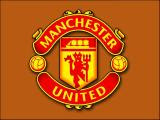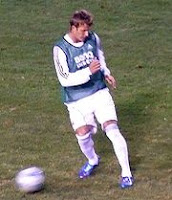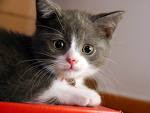Thursday, December 3, 2009
Nice Recipe...!!!!!
- Take a large quantity of cheerfulness and let it simmer without stopping.
- Put with a brimming basinful of kindness, then add a full measure of thoughtfulness for other people.
- Mix into these a heaping table spoon of sympathy.
- Flavor with the essence of charity.
- Stir well together and then carefully strain off any particles of selfishness.
- Let the whole be served with LOVE sauce.
Friday, November 20, 2009
yummy....
- The sago worm or sago grub is the larvae of the Sago Palm Weevil.
- It lives and feeds on the starchy pulp of the trunk of the sago palm. It is rich in protein.
- Sago worms have a plump, yellowy-cream body with a soft-ridged texture and a hard-shelled head. The body of the worm is covered by fine hair.
- In New Guinea sago worms are roasted on a spit to celebrate special occasions. They are eaten either alive or cooked in many parts of New Guinea, notably among the Asmat, Korowai and Kombai peoples of southern New Guinea.
- Sago grubs have been described as tasting like bacon or meat, and are often cooked together with sago flour.
- Sago Delight, Kadazan or Fried Sago Worms is a speciality in Malaysia , although versions of this dish can be found in many Southeast Asian countries and Papua New Guinea.
- The sago worm also can be found in other starch-bearing palms such as the Pantu palm and Aping palm found in the interior of Borneo. It is regarded as a special high-nutrient delicacy among most Sarawak tribes such as the Melanau.
Thursday, November 19, 2009
Dear Santa,
Santa Claus, also known as Saint Nickolas, Father Christmas, Kris Kringle or simply "Santa", is the legendary and mythical figure who, in many Western cultures, brings gifts to the homes of the good children during the late evening and overnight hours of Christmas Eve, December 24 or on his Feast Day, December 6 (Saint Nicholas Day).
The legend may have part of its basis in hagiographical tales concerning the historical figure of gift giver Saint Nicholas.
While Saint Nicholas was originally portrayed wearing bishop's robes, today Santa Claus is generally depicted as a plump, jolly, white-bearded man wearing a red coat with white collar and cuffs, white-cuffed red trousers, and black leather belt and boots.
In the United Kingdom and Europe, his depiction is often identical to the American Santa, but he is commonly called Father Christmas.
One legend associated with Santa says that he lives in the far north, in a land of perpetual snow. The American version of Santa Claus says that he lives at his house on the North Pole, while Father Christmas is often said to reside in the mountains of Korvatunturi in Lapland Province, Finland.
Santa Claus lives with his wife Mrs. Clause, a countless number of magical elves, and eight or nine flying reindeer.
Another legend of Santa says that he makes a list of children throughout the world, categorizing them according to their behavior ("naughty" or "nice") and that he delivers presents, including toys, candy, and other gifts to all of the good boys and girls in the world, and sometimes coal to the naughty children, on the single night of Christmas Eve.
He accomplishes this feat with the aid of the elves who make the toys in the workshop and the reindeer who pull his sleigh.
Nicholas was famous for his generous gifts to the poor, in particular presenting the three impoverished daughters of a pious Christian with dowries so that they would not have to become prostitutes.
He was very religious from an early age and devoted his life entirely to Christianity. In Europe (more precisely the Netherlands, Belgium, Austria and Germany) he is still portrayed as a bearded bishop in canonical robes.
(Source from http://en.wikipedia.org/wiki/Santa_Claus)
Monday, November 16, 2009
DaViD BeCkHaM
David Robert Joseph Beckham was born in 02 May 1975 to David Edward Alan or Ted and Sandra Georgina West at Leytonstone, England.
He attended one of Bobby Charlton's football schools in Manchesterat the age of 11 and won the chance to take part in a training session at FC Barcelona, as part of a talent competition. He played for a local youth team called the Ridgeway Rovers – coached by his father, Stuart Underwood and Steve Kirby.
He regularly played football in Ridgeway Park, Chingford, as a child, and attended Chase Lane Primary School and Chingford Foundation School.
His parents were fanatical Manchester United supporters who would frequently travel to Old Trofford from London to attend the team's home matches. David inherited his parents' love of Manchester United, and his main sporting passion was football.
After being signed as a trainee on July 8, 1991, the Bobby Charlton fan played as a substitute for Andrei Kanchelskis on September 23, 1992. The game against Brighton marked David Beckham's debut as a United player.
Winner of the 1992 FA Youth Cup and runner-up a year later, David Beckham was finally signed as a professional United player in January 1993. The 18-year-old soccer pro played in his first Champions League game and contributed a goal to the team's final win.
Despite his talent, David Beckham only made his full debut in April 1995. He became a first team regular in the 1996-97 season as a right midfielder. In 1996, not only did England get a taste of David Beckham's crossing, free-kick and long-shot talent, but the player also won the FA Premier League, Cup and Charity Shield, all in the same year. 1996 was also the year David Beckham made his international debut in a game against Moldova.
In 1999, David Beckham won another FA Cup, and came in second place in the European Ballon d'Or awards and as FIFA's World Player of the Year. He also won a Champions League title, an Intercontinental Cup and an English league title that same year. Despite the honors, David Beckham's temper had not improved; something that was evident after he received a red card for tackling a Necaxa player at the FIFA World Club Championships.
In June 2003, it was announced that Real Madrid would pay a transfer fee of $41 million for David Beckham, who joined a team full of star footballers like Zinedine Zidane, Luis Figo and Ronaldo.
(Source from http://en.wikipedia.org/wiki/David _Beckham#Manchester_United and http://www.askmen.com/celebs/men/sports/30_david_beckham.html#bio)
Thursday, November 12, 2009
Cats
- The cat (Felis catus), also known as the domestic cat or house cat to distinguish it from other felines and felids, is a small carnivorous mammal that is valued by humans for its companionship and its ability to hunt vermin and household pests.
- It has been associated with humans for at least 9,500 years and is currently the most popular pet in the world.
- It can be trained to obey simple commands. Individual cats have also been known to learn on their own to manipulate simple mechanisms, such as doorknobs and toilet handles.
- Cats use a variety of vocalizations and types of body language for communication including meowing, purring, trilling, hissing, growling, squeaking, chirping, clicking, and grunting.
- Cats have excellent night vision and can function at only one-sixth the light level required for human vision.This is partly the result of cat eyes having tapetum lucidum which reflects any light that passes through the retina back into the eye, thereby increasing the eye's sensitivity to dim light.
- Another adaptation to dim light is the large pupils of cats' eyes. Unlike some big cats, such as tigers, domestic cats have slit pupils. These slit pupils can focus bright light without chromatic aberration, and are needed since the domestic cat's pupils are much larger, relative to their eyes, than the pupils of the big cats.
- Domestic cats have rather poor color vision and can only see two colors: blue and green, and are less able to distinguish between red and green, although they can achieve this in some conditions.
- Cats have excellent hearing and can detect an extremely broad range of frequencies. They can hear higher-pitched sounds than either dogs or humans, detecting frequencies from 55 Hz up to 79 kHz, a range of about 7 octaves; while humans can only hear from 31 Hz up to 18 kHz, and dogs hear from 67 Hz to 44 kHz, which are both ranges of about 6 octaves.
- Cats do not use this ability to hear ultrasound for communication but it is probably important in hunting, since many species of rodents make ultrasonic calls. Cats' hearing is also extremely sensitive and is among the best of any mammal, being most sensitive in the range of 500 Hz to 32 kHz.
- This sensitivity is further enhanced by the cat's large movable outer ears (their pinnae), which both amplify sounds and help a cat sense the direction from which a noise is coming.
- Cats have an acute sense of smell, which is due in part to their well-developed olfactory bulb and also to a large surface of olfactory mucosa, in cats this mucosa is about 5.8 cm2 in area, which is about twice that of humans and only 1.7-fold less than the average dog.
- Cats respond strongly to the smell of nepetalactone, a compound found in catnips, and can detect this substance at less than one part per billion. Cats are also sensitive to pheromones, which they use to communicate through urine spraying and marking with scent glands.
- Due to a mutation in an early cat ancestor, one of two genes necessary to taste sweetness may have been lost by the cat family. Their taste buds instead respond to amino acids, bitter tastes and acids.
- To aid with navigation and sensation, cats have dozens of movable vibrissae (whiskers) over their body, especially their face. These provide information on the location of objects in the dark, both by touching objects directly and by sensing air currents; they also trigger protective blink reflexes to protect the eyes from damage.


































.jpg)















